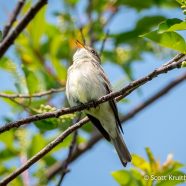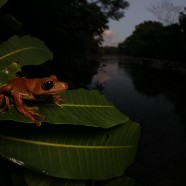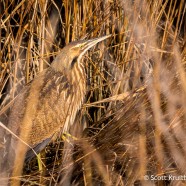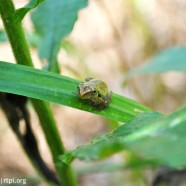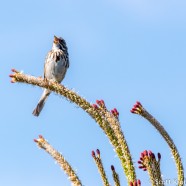Eastern Wood-Pewee
I recently mentioned that we still have flycatchers coming into the region as spring migration wraps up, and even into early June you may find individuals at migratory stopover sites. One such bird was this Eastern Wood-Pewee (Contopus viren), and he provided far better looks here than most do in the depths of the dark forest or higher up in the canopy. Finding him was easy thanks to that “peeeeaaaweeee” call, and he is belting it out in the second photo. Identifying flycatchers by voice makes life so much easier, especially when you cannot always rely on habitat thanks to...
Read MoreGladiator Tree Frog (Hypsiboas boans)
Our crew is back from the field! RTPI Affiliate Sean Graesser writes that this Gladiator Tree Frog (Hypsiboas boans) was a great way to end the trip. Sitting on the river side Sean says the call is unmistakable this time of year at the gorgeous Cocobolo Nature Reserve in Panama. There will be much more to come from a very successful week, including great photos and awesome finds, from Sean and RTPI President Twan Leenders soon.
Read MoreAmerican Bittern
This is the American Bittern (Botaurus lentiginosus), a stupendously cryptic and sensationally camouflaged heron species of freshwater and brackish marshes and wetlands. During late fall and winter they can be infrequently found moving south to warmer or coastal areas where the water does not freeze. Even their movements are meant to blend in perfectly to surrounding vegetation, stalking prey including fish, amphibians, insects, mammals, reptiles, and more. The American Bittern was once a terror in the night to many early American settlers who lived in coastal regions. Its pumping, gurgling,...
Read MorePeepers Peeping
Have you heard the Spring Peepers calling lately? These little frogs seem to be a bit confused as breeding season was over months ago! Although we are entering autumn and the frogs will soon be going into torpor (an amphibian’s form of hibernation), the current conditions closely mimic ideal breeding conditions in the spring. Low overnight temperatures, warm days, more frequent rainfall and a similar photo-period send the signal to the males to belt out their loud, high-pitched peeps in hopes of attracting some females. However, these little males will be disappointed pretty quickly as...
Read MoreNonstop Song
How do Song Sparrows even have time to breed and raise young? All they do is sing, sing, and sing…
Read More



